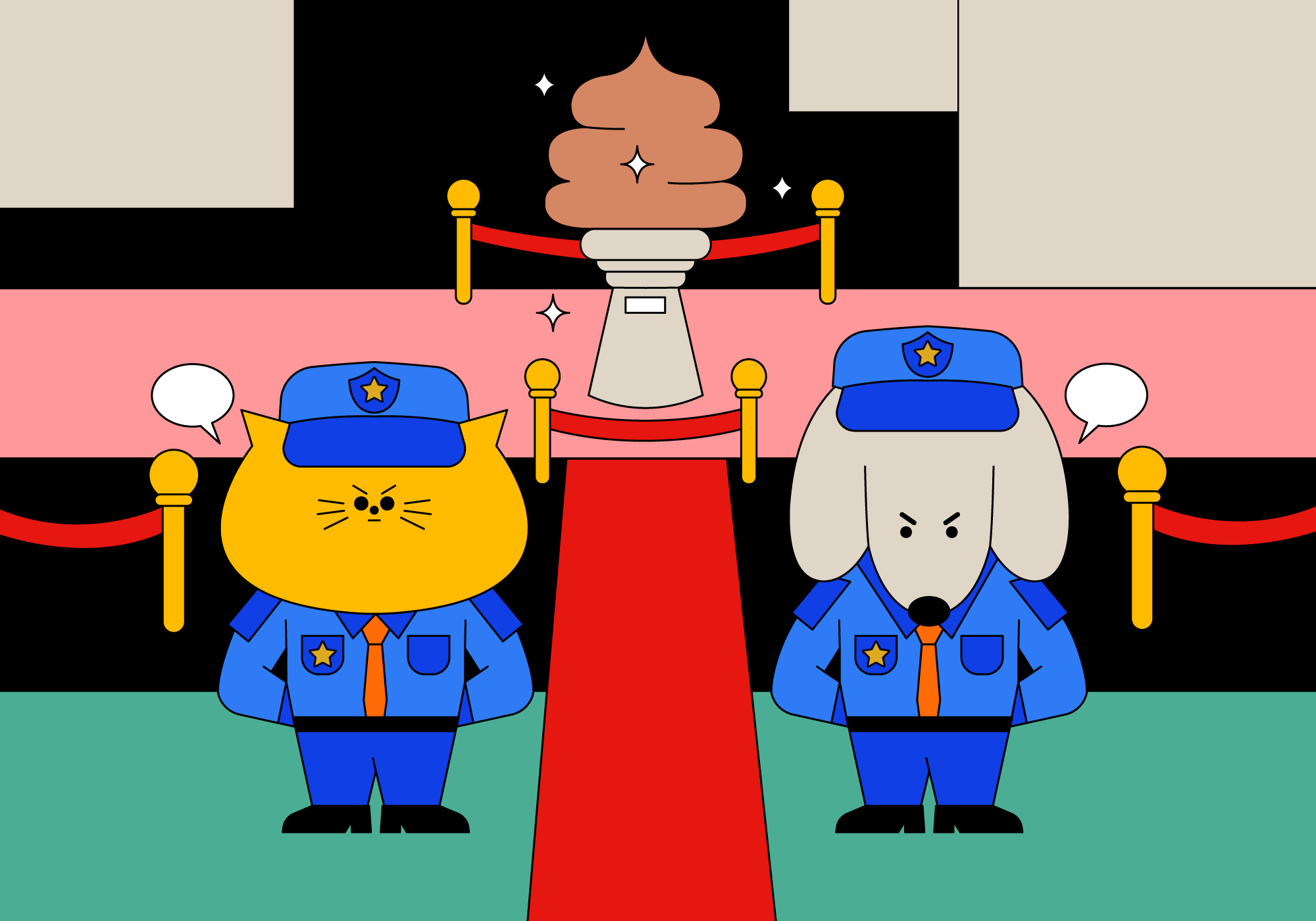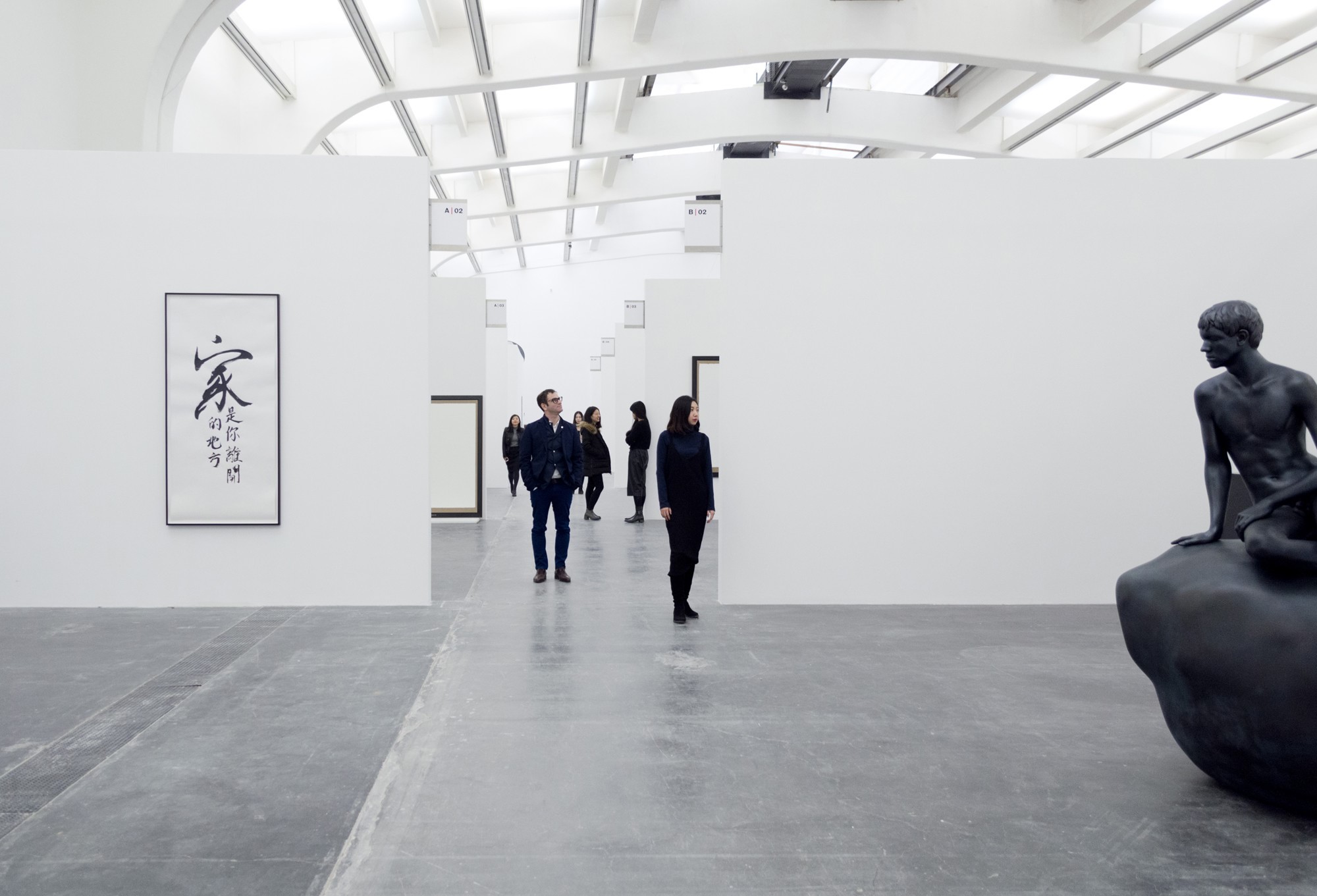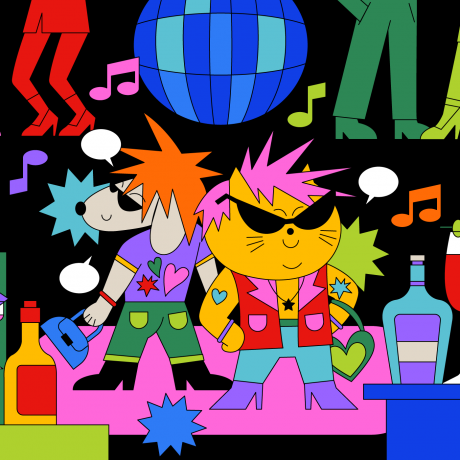
Q: I’m thinking about applying for a spot at a local art fair. I’m a solo ‘early career’ artist and I haven’t ever done an art fair before. I’m curious about whether it would actually be useful? Do people ever get anything back from them, or are they just an expensive way for me to rent some space for a weekend?
It is very useful having 80 thousand followers on Instagram because we don’t know everything about the art world but, fortunately for you, they do. We asked people to share their experiences of local art fairs with us to try to determine whether or not you should go ahead with this event.
First off, if any readers are not familiar with the concept of art fairs, you need to understand that the art industry has always had a weird relationship with money. It’s not easy for self-employed artists to turn paintings and sculptures into rent. So, some people try to deal with that problem head-on by organising fairs to bring art to buyers and buyers to art.
Companies will rent out booths in huge buildings to galleries who represent artists, or rent them directly to artists in some instances, so that creatives can sell their wares. You might have heard of the Frieze Art Fair, where the upper class go to buy big expensive paintings because they’ve just finished renovating their townhouses; or the Affordable Art Fair, which is an international event that allows the sale of works between £50-£7,500 (if you think £7,500 is affordable, please pay for my bills this winter).
“The general consensus was that art fairs are rarely profitable and not as useful as people would hope, but that doesn’t necessarily make them a no-no”
Local art fairs are similar to these other conventions except their reach and their revenue are on a much smaller scale, and there aren’t usually galleries to front the cost of renting the booth. This means all the pressure is on the artist to not just pay for the space but to make the money back and more within the few days the fair is on.
When we spoke to our readers about how well these fairs have gone for them in the past, the general consensus was that art fairs are rarely profitable and not as useful as people would hope given the cost, but that doesn’t necessarily make them a no-no.
“A lot of art fair attendees are only there to have a look at the artwork not to shop it, treating the fair as if it’s just another exhibition”
A lot of art fair attendees are only there to have a look at the artwork not to shop it, treating the fair as if it’s just another exhibition. Sales are few and far between. The problem might be that the disposable income crowd aren’t hanging out at local art fairs. They’re going to the big name fairs in cities like London and London alone. Or they are buying works through galleries because commercial representation is a stamp of approval they care about and trust. Remember that for some, art is only an investment, nothing more.
We heard from one person who managed to sell their first painting at an event but the majority made a loss. Some respondents decided to make the most of the footfall and give branded items out for free, such as prints, postcards and tote bags. They lost even more money (for the record, I am wincing), but took a gamble on their own marketing’s return on investment.
“All the pressure is on the artist to not just pay for the space but to make the money back and more within the few days the fair is on”
In the same vein, artists do sometimes rent booths at fairs simply to advertise themselves and their practice, give out business cards, and get their work in front of people who might not have the means to drop £600 on a canvas right now but maybe they will in the future. Perhaps they’ll come knocking a long time after the fair, which might be better anyway because you will be able to keep all the money. Remember, some fairs take a cut of sales on top of everything else, so always check the small print.
Artists who take part in fairs can always bring a camera along to take some classy install shots of their work hung properly, and silhouettes of people looking at their work for scale and so on. This staging can produce genuinely good marketing materials that most artists wouldn’t otherwise be able to achieve because practically everybody works from home or a tiny, rundown studio.
Some artists praise the networking opportunities, not just with buyers but with other creatives and visiting curators too. Others had high hopes and arrived at the fair to find their original work wonky on a wall, damaged, or kept in a space with no security, with barely any attendees to show their damaged, wonky work to.
“Some artists praise the networking opportunities, not just with buyers but with other creatives and visiting curators too”
It really is a gamble. Local art markets can be much more straightforward, casual, and profitable than art fairs. They are usually cheaper to get a table at, and the crowds are friendlier in my experience. If I was an artist and I had booth-renting money, I’d honestly spend it on materials, residencies, talks and books to invest in the artistic merit of my work instead. Or I’d pay a bid-writer to help me get a research and development grant.
Fairs stress me out and I don’t even make art. They are such a mixed bag, and I just think that artists don’t need more precariousness, they need stable incomes, opportunities, and solid critical support.

Culture Therapy: Let Art Solve Your Problems
I’m not a big fan of artist duo Elmgreen & Dragset. If I’m honest, I think they’re a bit spoiled. Something like resentment pops up whenever I think of those big budgets and the full scale theatricality that they’re allowed access to. I think nearly anyone could do a better job of it if they were given the institutional green light that they get. I think it’s a waste.
BUT… having said that, this month’s art prescription is an Elmgreen & Dragset work.
It’s The Well Fair, a full scale reproduction of an art fair that they staged in 2016 at the Ullens Center for Contemporary Art (UCCA) in Beijing. That was it. They just staged a reproduction of an art fair with spooky vibes. Nothing was actually for sale and there was a VIP lounge that no one could actually access.
“The whole production relies on you being familiar with what an art fair actually is, the vibes and the quirks that characterise them”
I’m prescribing it because I think it’s illustrative. The whole production relies on you being familiar with what an art fair actually is, the vibes and the quirks that characterise them. It demonstrates the format’s ubiquity. It’s also just soooooo limp. By reproducing a thing, we are meant to infer a criticism of the thing. I am prescribing this so you can feel superior.
Let’s all join hands and hate this thing together. Everyone say “BOO!” at the count of three. One, Two, Three!
Illustration by Lucia Pham, an illustrator based in Hanoi
Advice Column
Got an art-world problem? Every month The White Pube set out to help a different Elephant reader…
READ MORE





